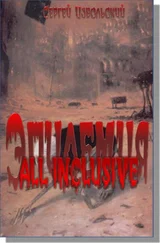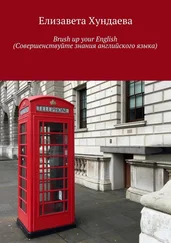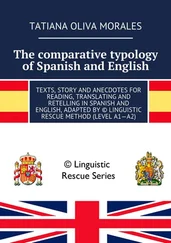1 ...7 8 9 11 12 13 ...28 All the preschool groups comprised children who were learning German as a second language. In most of the groups the number of these children ranged between 11 and 21; but overall, the groups varied greatly (→ statistical data 3). On one extreme 2 groups had 2 children learning German, while on the other extreme 1 group had all 25 children learning German. Because of this enormous heterogeneity in the groups, statistical data 4 simplifies the situation by establishing whether preschools had over 50 % or under 50 % of their children learning German. The groups in each preschool were combined to calculate the percentage of children who were learning German in that particular preschool (→ statistical data 4). The data shows that in the majority of the preschools, the children were learning German as a second language (73.3%) (→ statistical data 4). This information was important to be able to select a representative sample.
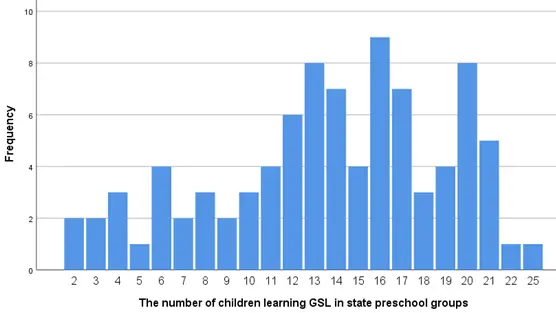 Figure 4:
Figure 4:
Statistical data 3: The number of children learning GSL in state preschool groups
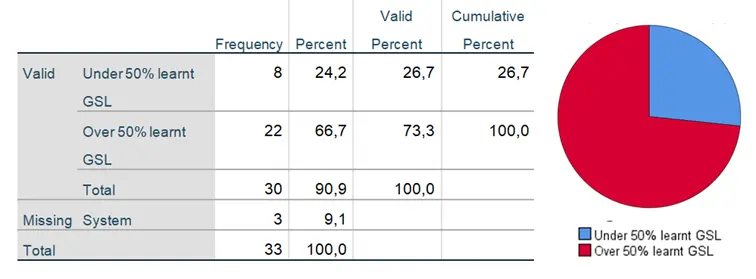 Figure 5:
Figure 5:
Statistical data 4: The percentage of children learning GSL in state preschools
3.2.2 State preschools offering German as a second language
The next questions aimed to find out how many state preschools offered German as a second language (→ question 2a) and if the preschool teachers were involved in teaching German to the children (→ question 2a-1). Apart from the relevance of this information to be able to select a representative context of practice for the sampling, it would also indicate if preschool teachers had some experience in teaching children languages (in this case, German as a second language), through which teachers might have developed some competence that they could then transfer to teaching English. Data that provided this information resulted from the following questions:
Is German taught in your preschool? (Findet in Ihrem Kindergarten Deutschförderung statt?) (question 2a).
Who teaches German in your preschool? (Wer unterrichtet Deutsch als zweite Sprache?) (question 2a-1).
The staff involved in teaching the children comprises the head of the preschool, the preschool teachers, preschool teachers’ assistants, teachers for special needs and expert language teachers who come to the preschool. With the exception of one preschool, all state preschools offered German as a second language. In over half of the preschools, the preschool teachers were not responsible for teaching the children German (→ statistical data 5). With one exception, preschool teachers otherwise shared the responsibility with expert teachers coming to the preschool and / or with the head of the preschool or other staff members. 22 of the preschools had an external expert teacher who came to the preschool to support language teaching (→ statistical data 5 & 6).
 Figure 6:
Figure 6:
Statistical data 5: Staff teaching GSL in state preschools
 Figure 7:
Figure 7:
Statistical data 6: An expert GSL teacher comes to the preschool
The results of this data show that over half of the preschool teachers did not have experience in teaching German and the preschool teachers who actually taught German only shared the responsibility. Therefore, it cannot be presumed that they have developed competences in teaching a language, which the teacher education project could build on. In the sampling selected for this study none of the participating preschool teachers were responsible to teach the children German. It was the responsibility of the head of the preschool and an expert language teacher to offer German to small groups throughout the week.
3.2.3 State preschools offering English as a foreign language
The second part of the question aimed at finding out whether the state preschools offered English (→ question 2b). There were three options to choose from: either English would be offered on a regular basis; it would be offered only occasionally (for example, singing an English song or chanting a rhyme every now and again) or English would not be offered at all (→ question 2b). From my knowledge of the context, preschools have two options: either the employed staff (preschool teachers or the head of the preschool) would be responsible to integrate English in their routine or a visiting teacher would offer it. A visiting teacher is a teacher who comes to the preschool to offer English on a regular basis as an extra-curricular activity. Visiting teachers are either qualified English teachers or native speakers of English. It was important to find out how many of the preschools offer English regularly through the regular staff that is employed at the preschool in question, the preschool teachers or the head of the preschool. Again, this would provide important information on teachers’ English teaching competences . It would also be interesting to learn if English were offered to all of the children of a preschool or only to a selected group of children. Data that provided this information resulted from the following questions:
Is English offered in your preschool? (Wird Englisch in Ihrem Kindergarten angeboten?) (question 2b).
Who offers it? (Wer bietet es an?) (question 2b-1).
When offered by a visiting teacher, which children take part? (Wenn angeboten von jemandem von auswärts: welche Kinder nehmen am Unterricht Teil?) (question 2b-2).
The data shows that over half of the state preschools offer some form of English either as a regular activity (answered with yes) or only occasionally (meaning they only sang a song every now and again). 10 preschools offered English on a regular basis (→ statistical data 7). Of these 10 preschools, only 2 offered English through their preschool teachers (→ statistical data 8). The remaining 8 preschools offered English through visiting teachers (→ statistical data 9). All of the visiting teachers taught small groups of enrolled children. Therefore, it can be concluded that the general situation in state preschools in Salzburg is that the majority of the preschools either offer no English at all or provide it only as an extra activity to an exclusive group of children.
 Figure 8:
Figure 8:
Statistical data 7: English offered in Salzburg state preschools
 Figure 9:
Figure 9:
Statistical data 8: Preschool teachers offering English regularly to their groups
 Figure 10:
Figure 10:
Statistical data 9: Visiting teachers offering English regularly
Читать дальше
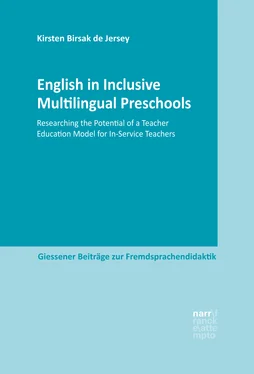
 Figure 4:
Figure 4: Figure 5:
Figure 5: Figure 6:
Figure 6: Figure 7:
Figure 7: Figure 8:
Figure 8: Figure 9:
Figure 9: Figure 10:
Figure 10: